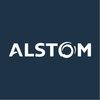Filter interviews by
Megha Engineering & Infrastructures Safety Officer Interview Questions and Answers
8 Interview questions
HIRA stands for Hazard Identification and Risk Assessment. It is a systematic process to identify potential hazards and assess the associated risks.
Identify all potential hazards in the workplace or task
Assess the likelihood and severity of each hazard
Determine the level of risk for each hazard
Implement control measures to mitigate or eliminate the risks
Regularly review and update the HIRA as needed
JSA stands for Job Safety Analysis. It is a process used to identify and control hazards in the workplace.
JSA involves breaking down a job into its individual tasks and identifying potential hazards associated with each task.
The purpose of JSA is to prevent accidents and injuries by proactively addressing safety risks.
JSA helps in developing safe work procedures and training employees on how to perform tasks safel...
Working at height poses risks of falls, falling objects, and structural collapses.
Falls from height can result in serious injuries or fatalities
Objects dropped from height can cause harm to workers below
Structural collapses can occur due to improper installation or maintenance
Safety measures such as guardrails, harnesses, and regular inspections are crucial to prevent accidents
There are three main types of hazards: physical, chemical, and biological.
Physical hazards include slips, trips, falls, noise, vibration, and extreme temperatures.
Chemical hazards involve exposure to harmful substances like gases, liquids, and dusts.
Biological hazards come from exposure to viruses, bacteria, fungi, and parasites.
There are five main classes of fire: Class A, Class B, Class C, Class D, and Class K.
Class A fires involve ordinary combustible materials such as wood, paper, and cloth.
Class B fires involve flammable liquids like gasoline, oil, and grease.
Class C fires involve energized electrical equipment.
Class D fires involve combustible metals like magnesium, titanium, and sodium.
Class K fires involve cooking oils and fats co...
Confined space is an area that is not designed for continuous occupancy, has limited entry and exit points, and may have poor ventilation.
Confined spaces are typically small and enclosed, making it difficult to enter and exit.
These spaces may contain hazardous substances or conditions that can be harmful to workers.
Examples of confined spaces include storage tanks, silos, tunnels, and sewers.
Safety in construction refers to the measures taken to prevent accidents, injuries, and fatalities on construction sites.
Ensuring proper training and supervision of workers
Implementing safety protocols and procedures
Providing personal protective equipment (PPE)
Regular inspections of equipment and work areas
Emergency preparedness and response plans
Examples: Fall protection systems, scaffolding safety measures
Effective equipment training ensures safety and proficiency in using tools and machinery in the workplace.
Conduct regular training sessions to familiarize employees with equipment.
Use hands-on demonstrations to enhance understanding, e.g., showing proper lifting techniques for heavy machinery.
Implement a buddy system where experienced workers mentor new employees on equipment use.
Provide clear manuals and safety g...
Megha Engineering & Infrastructures Safety Officer Interview Experiences
4 interviews found
(2 Questions)
- Q1. What is HIRA and how to prepare it
- Ans.
HIRA stands for Hazard Identification and Risk Assessment. It is a systematic process to identify potential hazards and assess the associated risks.
Identify all potential hazards in the workplace or task
Assess the likelihood and severity of each hazard
Determine the level of risk for each hazard
Implement control measures to mitigate or eliminate the risks
Regularly review and update the HIRA as needed
- Q2. What is JSA and its purposes
- Ans.
JSA stands for Job Safety Analysis. It is a process used to identify and control hazards in the workplace.
JSA involves breaking down a job into its individual tasks and identifying potential hazards associated with each task.
The purpose of JSA is to prevent accidents and injuries by proactively addressing safety risks.
JSA helps in developing safe work procedures and training employees on how to perform tasks safely.
Exa...
HIRA , JSA, MSDS , PTW
Interview Preparation Tips
I appeared for an interview in Oct 2024, where I was asked the following questions.
- Q1. Safety requirements rule
- Q2. Equipment training use
- Ans.
Effective equipment training ensures safety and proficiency in using tools and machinery in the workplace.
Conduct regular training sessions to familiarize employees with equipment.
Use hands-on demonstrations to enhance understanding, e.g., showing proper lifting techniques for heavy machinery.
Implement a buddy system where experienced workers mentor new employees on equipment use.
Provide clear manuals and safety guidel...
- Q3. Safety precautions
- Q4. Safety work and treaning
I applied via Naukri.com

(5 Questions)
- Q1. How many type of hazard
- Ans.
There are three main types of hazards: physical, chemical, and biological.
Physical hazards include slips, trips, falls, noise, vibration, and extreme temperatures.
Chemical hazards involve exposure to harmful substances like gases, liquids, and dusts.
Biological hazards come from exposure to viruses, bacteria, fungi, and parasites.
- Q2. What is confined space
- Ans.
Confined space is an area that is not designed for continuous occupancy, has limited entry and exit points, and may have poor ventilation.
Confined spaces are typically small and enclosed, making it difficult to enter and exit.
These spaces may contain hazardous substances or conditions that can be harmful to workers.
Examples of confined spaces include storage tanks, silos, tunnels, and sewers.
- Q3. What is hazard of work at height
- Ans.
Working at height poses risks of falls, falling objects, and structural collapses.
Falls from height can result in serious injuries or fatalities
Objects dropped from height can cause harm to workers below
Structural collapses can occur due to improper installation or maintenance
Safety measures such as guardrails, harnesses, and regular inspections are crucial to prevent accidents
- Q4. What is safety in construction
- Ans.
Safety in construction refers to the measures taken to prevent accidents, injuries, and fatalities on construction sites.
Ensuring proper training and supervision of workers
Implementing safety protocols and procedures
Providing personal protective equipment (PPE)
Regular inspections of equipment and work areas
Emergency preparedness and response plans
Examples: Fall protection systems, scaffolding safety measures
- Q5. How many type of fire
- Ans.
There are five main classes of fire: Class A, Class B, Class C, Class D, and Class K.
Class A fires involve ordinary combustible materials such as wood, paper, and cloth.
Class B fires involve flammable liquids like gasoline, oil, and grease.
Class C fires involve energized electrical equipment.
Class D fires involve combustible metals like magnesium, titanium, and sodium.
Class K fires involve cooking oils and fats commonl...
Interview Preparation Tips
I applied via Walk-in and was interviewed in Dec 2020. There was 1 interview round.
Interview Questionnaire
1 Question
- Q1. 1 Tell me about your self 2 Project work 3 some basic topics related to safety 4 C.V. basic topics
Interview Preparation Tips
Top trending discussions






Interview questions from similar companies

I applied via Naukri.com and was interviewed in Dec 2017. There were 4 interview rounds.
Interview Questionnaire
3 Questions
- Q1. Tell me about your self
- Ans.
Experienced safety officer with a background in industrial safety protocols and emergency response procedures.
Over 5 years of experience in implementing safety measures in industrial settings
Proficient in conducting safety audits and inspections to ensure compliance with regulations
Skilled in developing and implementing safety training programs for employees
Strong knowledge of emergency response protocols and procedure...
- Q2. Duties of safety Officer
- Ans.
Safety Officers are responsible for ensuring the safety of employees in the workplace by implementing safety protocols and procedures.
Develop and implement safety policies and procedures
Conduct regular safety inspections and audits
Investigate accidents and incidents to determine root causes
Provide safety training to employees
Ensure compliance with safety regulations and standards
Maintain safety records and reports
- Q3. Working improvement
Interview Preparation Tips
Experience: Written test
General Tips: Expended
Skills: Self-Awareness
Duration: <1 week

Safety Officer Interview Questions & Answers
Shapoorji Pallonji Groupposted on 2 Nov 2021
I applied via Referral and was interviewed before Nov 2020. There was 1 interview round.
Interview Questionnaire
3 Questions
- Q1. About my Self
- Q2. Height work safety & Control measures
- Q3. Engineering control, legal control , administrative control, ppe
Interview Preparation Tips

Safety Officer Interview Questions & Answers
Larsen & Toubro Limitedposted on 12 Jun 2020
Interview Questionnaire
2 Questions
- Q1. About work experience. i.e HIRA,SOP,
- Q2. Basis knowledge.

Safety Officer Interview Questions & Answers
Shapoorji Pallonji Groupposted on 2 Nov 2021
I applied via Referral and was interviewed before Nov 2020. There was 1 interview round.
Interview Questionnaire
2 Questions
- Q1. Height work safety &Control measures
- Q2. Administrative control, Engineering control, legal control
Interview Preparation Tips

I applied via Referral and was interviewed before Feb 2021. There was 1 interview round.
(3 Questions)
- Q1. Tell me about yourself.
- Q2. What are your salary expectations?
- Ans.
I am looking for a competitive salary that reflects my experience and the industry standards for a Safety Officer role.
Based on my research, the average salary for a Safety Officer in this region is between $60,000 and $80,000 annually.
I have over 5 years of experience in safety management, which I believe warrants a salary towards the higher end of that range.
I am open to discussing a comprehensive compensation packag...
- Q3. What is your family background?
- Ans.
I come from a close-knit family that values safety, education, and community service, which has shaped my career choices.
My parents instilled a strong sense of responsibility in me from a young age.
I have a sibling who works in emergency services, which influenced my interest in safety.
Family gatherings often involve discussions about safety practices and community well-being.
Interview Preparation Tips

I appeared for an interview in Dec 2021.
Interview Preparation Tips
Megha Engineering & Infrastructures Interview FAQs
Tell us how to improve this page.
Megha Engineering & Infrastructures Interviews By Designations
- Megha Engineering & Infrastructures Senior Engineer Interview Questions
- Megha Engineering & Infrastructures Civil Site Engineer Interview Questions
- Megha Engineering & Infrastructures QA QC Engineer Interview Questions
- Megha Engineering & Infrastructures Civil Engineer Interview Questions
- Megha Engineering & Infrastructures Store Executive Interview Questions
- Megha Engineering & Infrastructures Graduate Engineer Trainee (Get) Interview Questions
- Megha Engineering & Infrastructures Senior Civil Engineer Interview Questions
- Megha Engineering & Infrastructures Engineer Interview Questions
- Show more
Interview Questions for Popular Designations
Overall Interview Experience Rating
based on 6 interview experiences
Difficulty level
Duration
Safety Officer Interview Questions from Similar Companies

Megha Engineering & Infrastructures Safety Officer Reviews and Ratings
based on 24 reviews
Rating in categories
|
Engineer
918
salaries
| ₹2.7 L/yr - ₹7 L/yr |
|
Senior Engineer
864
salaries
| ₹4.1 L/yr - ₹9.1 L/yr |
|
Associate Manager
543
salaries
| ₹6 L/yr - ₹14 L/yr |
|
Mechanical Engineer
403
salaries
| ₹2.4 L/yr - ₹6.6 L/yr |
|
Store Executive
356
salaries
| ₹2.2 L/yr - ₹6.4 L/yr |

Larsen & Toubro Limited

Shapoorji Pallonji Group

Alstom Transportation

Tata Technologies
- Home >
- Interviews >
- Megha Engineering & Infrastructures Interview Questions














